If you’re living the natural life and have dumped your toxic cleaning products and cosmetics, you’ve no doubt come across “no poo” or “low poo” non toxic methods of hair care. No poo means ditching your commercial shampoos and conditioners and cleansing your hair with natural agents such as baking soda, honey, vinegar, water only, tea rinses, herbs, essential oils, and/or even coffee. Low poo means you’ve found a shampoo formulated with natural ingredients, and it doesn’t contain nasty chemicals like sulfates, silicone, parabens, fragrance, and other stuff you can’t pronounce.
I’ve run across countless articles extolling the virtues of ditching shampoo for good. Because I’ve ditched chemical body care products, cleaning up my hair care routine was the next logical step. And my damaged hair needed repair. Here’s my experience with low and no poo and how I’m repairing my hair.
There is a ton of information out there about natural hair care, and I spent weeks pouring over it until I made the decision to go no poo. I also figured out a few pearls along the way that I wish I’d known going into the no poo experience. I have tried EVERYTHING to help repair my hair over the years, so I hope my experience helps you if you’re looking to give up shampoo. Read more about my hair story here.
First off, let me give you a little background. I’d always taken pride in my long, thick blonde-ish hair. But it has always been dry and somewhat coarse, so I conditioned and used deep conditioning treatments and TONS of products. I have baskets full of oils, serums, elixirs, and creams I’ve tried over the years. Anything to nourish my hair so I’d have the long, flowing locks of my dreams.
I’ve also been pretty hard on my hair. I’d highlight it on and off and put lemon on it in the sun. My favorite ‘do was to pull my long strands up into a bun at the top of my head. Every day. It looked pretty thick, full, and relatively healthy at various lengths when I babied it….. until one day it didn’t.
It seemed to be getting thinner, so I looked at the back of my head in the mirror one day and was shocked by what I saw. My hair looked fried and was getting brittle at the ends, and they were breaking off! SO much so that there was a huge CHUNK out of the bottom of my hair.
My hair looked like crap, it was super brittle, breaking off, thinning out, and I had to get several inches cut off to mask the damage. One reason was that I had low ferritin levels (borderline anemia) and had recently discovered I was hypothyroid, a condition where your thyroid isn’t producing enough hormone. Both these conditions cause brittle hair, breakage, and hair loss. The coloring and abusing it by pulling it into different styles with ponytail holders hadn’t helped either.
I had lost over 30 percent of my hair’s volume by this point, and I was pretty devastated. My hair looked thin, brittle, and terrible. I was in my mid-thirties, way too young to be experiencing hair loss!
I balanced my hormones and corrected my nutrient deficiencies (low iron and ferritin), a process that took two years. But still: thin, brittle hair.
I’d been reading about no poo for a while and had tinkered with honey washes and apple cider vinegar rinses, but my hair needed some kind of daily attention or it would look thin and flat. I was using organic products, so that was good enough, right? Well, no, not necessarily.
My No Poo Experience
First off, like diet, there is not a one size fits all approach to natural hair care! Please, PLEASE do your research before diving in. Understand that tinkering with the PH of your hair and scalp with natural agents like baking soda can cause more damage than it repairs. You’ll need to determine the porosity of your hair in addition to knowing whether it is dry, oily, brittle, normal, etc. That will dictate which no poo method is right for you, and believe me, it takes a LOT of trial and error, so be prepared for some experimenting.
Many people are first attracted to no poo using the baking soda apple cider vinegar method, which involves “washing” hair with a diluted baking soda solution followed by an apple cider vinegar rinse. The alkaline baking soda cleanses the hair and the acidic apple cider vinegar closes the cuticle and “conditions.” I strongly advice against this popular method, because it has the potential to be very damaging to hair over time, even if it seems to work great in the beginning. Extremely alkaline solutions like baking soda cause the disulfide bonds between keratin protein molecules in hair to break down, resulting in very damaged hair. Read here for more info on how baking soda damages hair.
I steered clear of the baking soda method, though I find apple cider vinegar rinses helpful to normalize the PH of the scalp, alleviate dandruff, and get rid of build-up. My first attempt with no poo was using Morocco Method’s line of raw, vegan, wildcrafted no poo “shampoos.” They are completely chemical free and contain only botanicals. The shampoos don’t foam or produce suds. They smell like hippies and natural foods stores, which is fine by me but not for everyone. My colleagues RAVE about this stuff, so I decided to give it a go with the goal of completely repairing my hair.
I was prepared for the transition period, a sometimes weeks-long process where your hair purges all the chemical build up and gunk from your conditioners and serums, resulting in oily/waxy looking locks while it normalizes after years of being stripped by conventional shampoos. I figured my hair already looked like crap, so no big deal. Once you get through the transition period, your hair supposedly suddenly looks amazing.
So I jumped in with Morocco Method, spending hours studying up. I followed the regime faithfully for months, and did experience a slight transition period. I thought I saw improvement, but my boyfriend repeatedly commented that my hair felt like straw and looked pretty bad. While it did increase in body and I saw much less shedding, it felt stiff and was still pretty brittle. I gave up after about four months. I think these products work well for those with normal-oily hair, but that’s just my opinion.
After Morocco Method, I joined a bunch of no poo/low poo forums on facebook to get some advice. It was pretty helpful. I found out about natural, chemical free shampoo bars with moisturizing coconut milk and soapnuts, both of which dried my hair and made it look crispy and frizzy. I also learned about chemical-free “low poo” options, like Shea Moisture shampoos. I really love their line, and it’s inexpensive and no chemicals. Best for very dry, damaged, brittle hair, like mine. I combined the Shea Moisture moisture retention shampoo with chamomile tea and green tea rinses, and started using various masks to repair breakage. I used egg yolk, yogurt, coconut oil, and the Shea Moisture anti-breakage mask. I was also tinkering around with using aloe vera to replenish moisture and doing honey washes. Things began to look up.
I cut all my hair off and was pretty unhappy about it (clearly, as evidenced by my scowl and ugly haircut).
The Verdict
After about six months of trying Morocco Method, honey washes, aloe vera, tea rinses, and various low poo options, I finally settled on a “low poo” type routine that’s working for my low porosity hair. It’s growing back and getting thicker. Morocco Method wasn’t for me, and I wouldn’t try or recommend baking soda, so here’s what I’ve settled on:
- I wash my hair with Shea Moisture once weekly and use a rotating cast of low poo conditioners. I like the Shea Moisture restorative conditioner and the Acure deep conditioner.
- I do the water only method to keep my hair looking good in between washes. I rinse with chamomile tea these days. It keeps blondes looking bright and makes hair soft and shiny.
- I do a mask once a week to prevent breakage. I use the Shea Moisture anti-breakage mask, or egg yolk and yogurt with Ylang Ylang essential oil. I also use plain coconut oil as a mask for moisture. Be careful about adding protein vs moisture: too much protein can actually cause breakage. I determined my hair needed more moisture and less protein.
- I often co-wash (meaning I wash with conditioner only, scrub it like shampoo; let it sit; rinse) with this Acure hydrating conditioner instead of shampoo.
- Not low poo, but I’ve used and liked this hair Rx serum to help repair damage. It’s got fewer chemicals than most and works GREAT! I can really tell a difference.
- I do like the Morocco Method hair oil, and it seems to help condition my dry hair. I use that each time my hair is wet.
- I also use the Shea Moisture hair growth milk several times a week.
- I’ve heard Shikakai is wonderful for regrowing hair and strengthening, but I haven’t tried it yet. This shampoo is on my to-try list!
- I rotate between different methods and products.
- I don’t pull my hair up into a tight bun anymore. It stresses the strands.
- I take diatomaceous earth internally daily for periods of time (not continuously). Its very high silica content is excellent for hair, skin, nails, and bone health. I can tell an enormous difference in my hair from using it daily. Read my post on diatomaceous earth here. Bamboo extract works similarly and is in this powdered supplement I occasionally take.
- I saw the most difference when I started taking this supplement.
- Collagen peptides daily made an enormous difference, enough that people started to comment how much better my hair looked and how fast it was growing.
Here’s my hair after a month or so on the above described regimen.
The damage has been curtailed and I’m in the repair process. It’s noticeably thicker. I’m growing it out. There are many chemical-free products that help with hair regrowth (see resources section below).
Here’s my hair a year later, after settling into my loo poo routine.
In terms of diet, I take this liquid iron supplement, drink plenty of bone broth, take collagen 5-7x/week, take an omega 3 fatty acid, and get enough high quality protein and minerals. I’ve also used this hair-skin-nails formula on and off and it works wonders! I saw SUCH a difference after 3 weeks. I’m also working on gut health to ensure I’m absorbing all the nutrients from my food.
I work with a lot of women who experience hair loss and breakage, so I know how devastating it feels! I put together some resources to help you figure out what’s best for you.
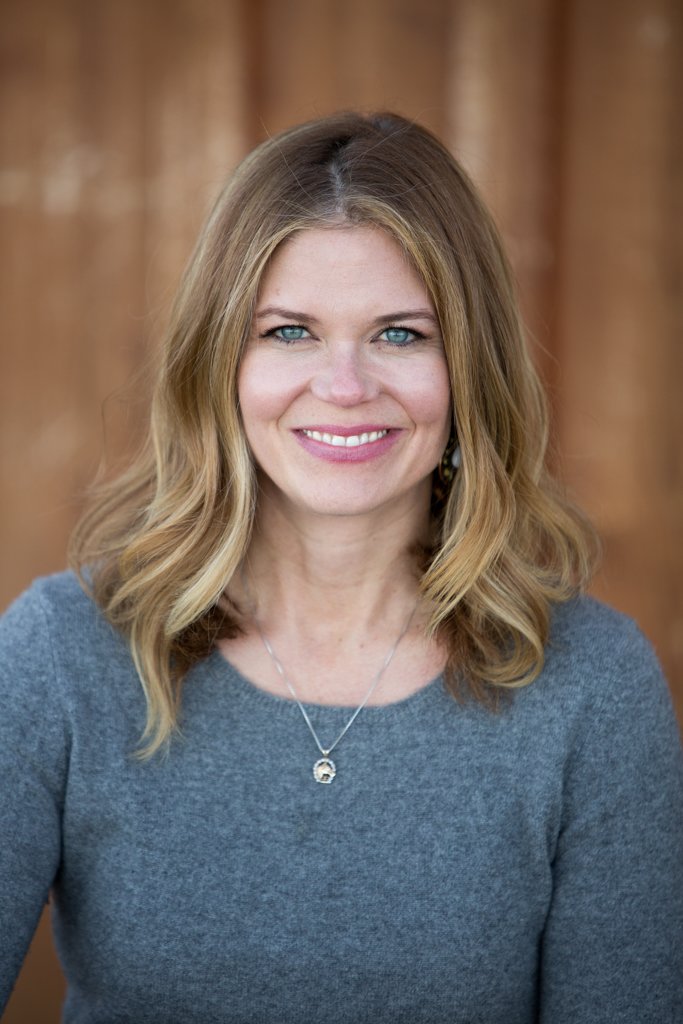
Mary Vance is a Certified Nutrition Consultant and author specializing in digestive health. She combines a science-based approach with natural therapies to rebalance the body. In addition to her 1:1 coaching, she offers courses to help you heal your gut and improve your health. Mary lives in San Francisco and Lake Tahoe in Northern California. Read more about her coaching practice here and her background here.

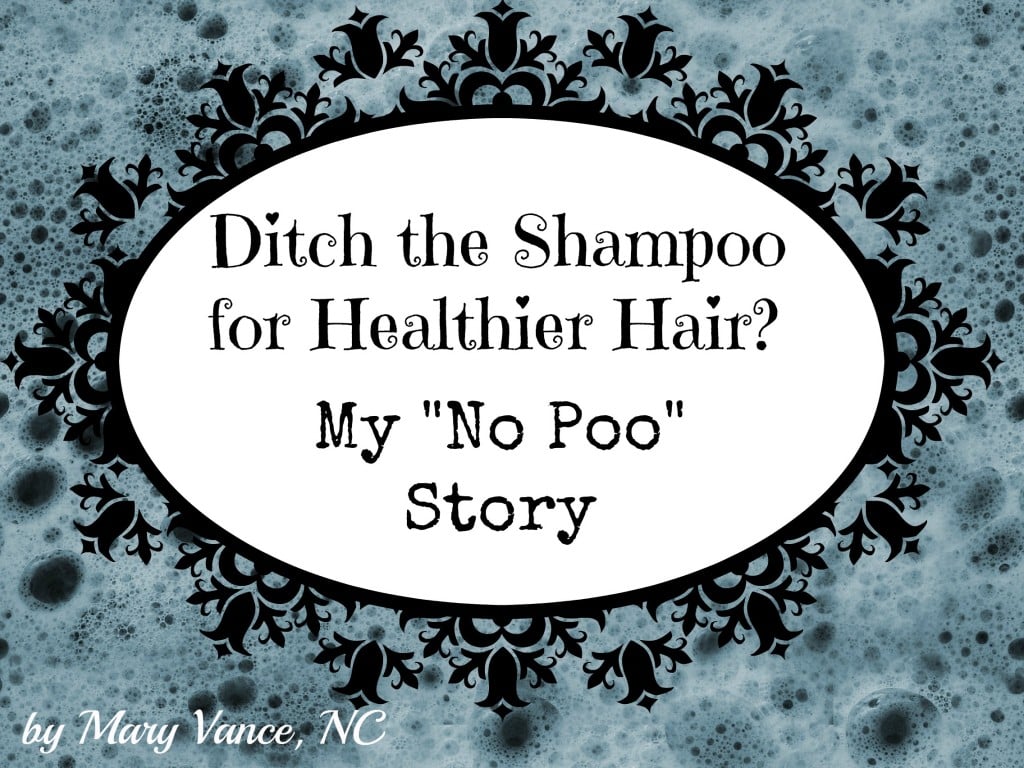




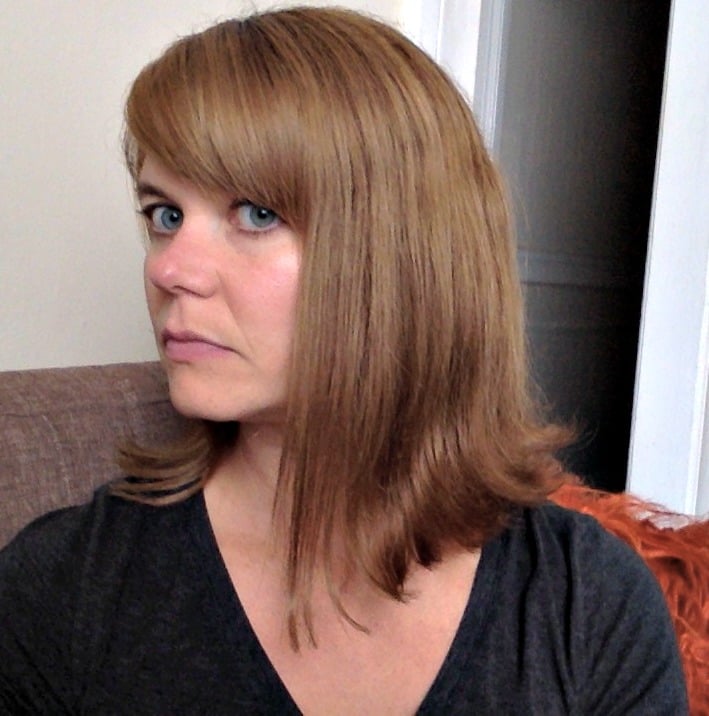
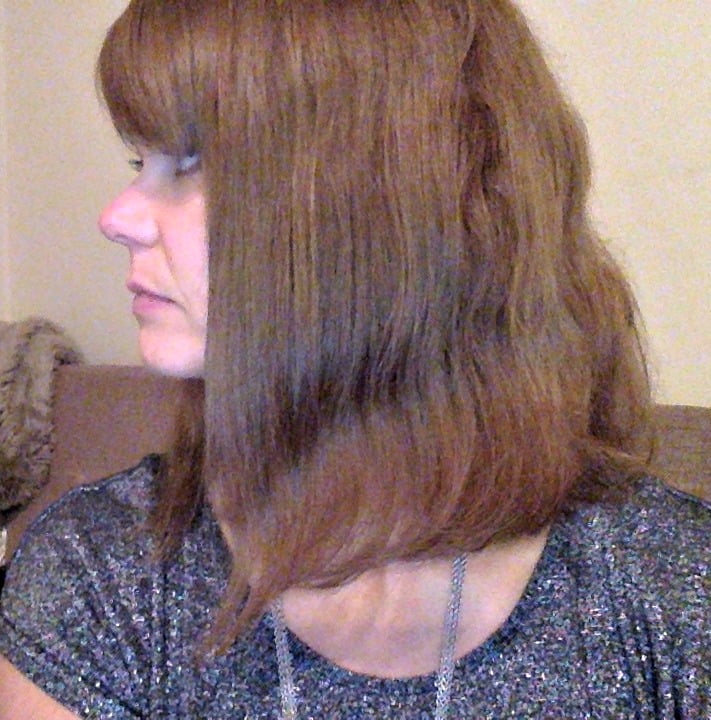
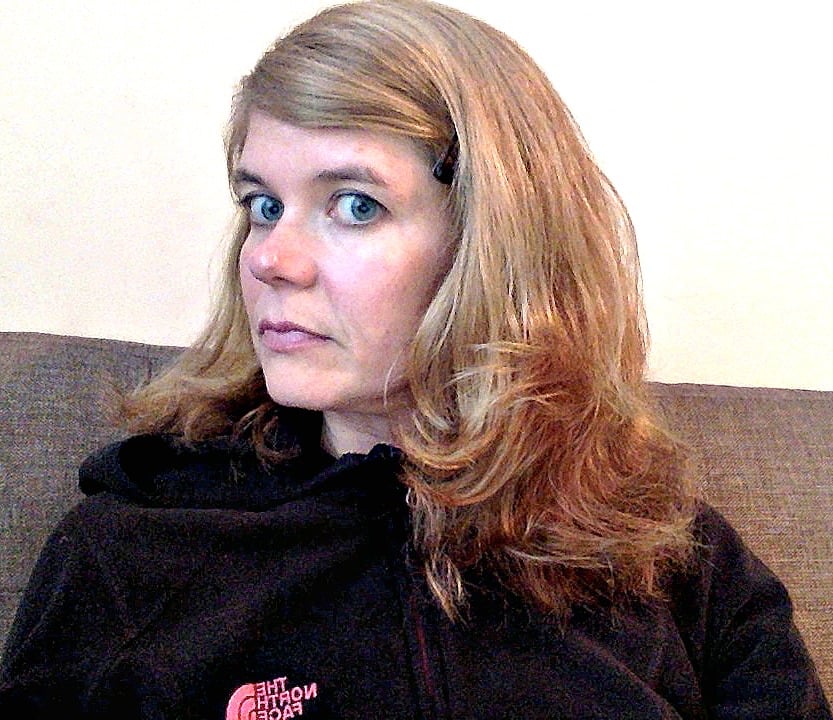


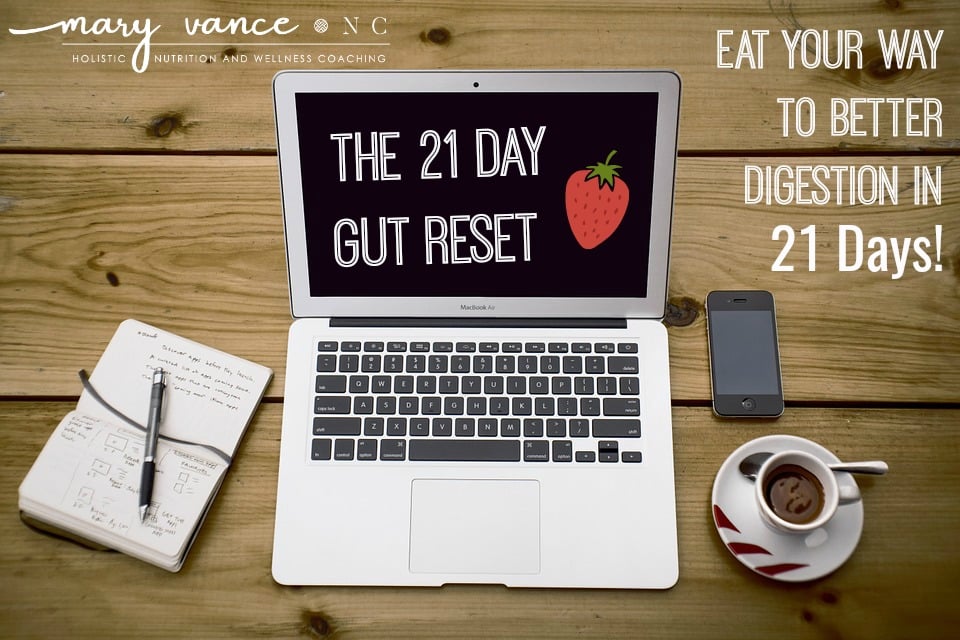
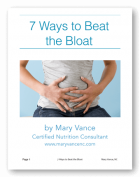
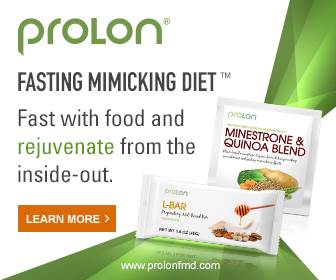

Thanks for the great info. My hair is pretty normal, I get tired of trying different things. Ended up getting a gallon of Shikai Everyday Shampoo on sale, have bought a second one since. Thanks for helping me feel less “guilty” about not liking no poo and esp. not liking the Morrocco Method shampoo and conditioner I got!
http://smile.amazon.com/Shikai-Natural-Everyday-Shampoo—/dp/B00EZL9X9Y/ref=sr_1_1?ie=UTF8&qid=1420501177&sr=8-1&keywords=shikai+shampoo
I can relate to this. I hade thyreoidit and after that my hair went thin, dry and terrible. From a thick and relativy wavy hair to thin and almost pin straight without any body. I also started eating iron and B-vitamins. That made it all look a little better, but not enough. I had to cut it off in a short style. Now after a lot of years my hair is more normal. I use brown henna, and that makes the hair look fuller and shiny. I wash my hair twice a week, sometimes co wash, and sometimes with shampoo.
guys its really easy and ur hairs will look amazing if u follow this:
1- use warm/hot water to clean excess oil. (stop shampoo and other hair products)
2- use boar bristle brush often to distribute oil.
3- use raw honey or aloe vera once in a while if u having dandruff
4- wash less. hair is best when its coated by ur natural oils. u wont need any wax or styling products.
5- notice when u wash with water.. the hair will be dry for a day or two.. then it will be amazing the next 10-20 days. then u can wash with water again.
Actually it is gud if u wash it less. and stay in ur natural oils. it traps dust and other stuff in air and protects them going in ur eyes and nose.
eat healthy. get all vitamins minerals protein and eat natural and good stuff like fruits.
just try to take extra care with those 5 steps. like using warm water then cold when ure done.. and also dont rub it with a towel. let it dry naturally. try to cover it with a bandana or a hat when ure working on a dirty farm.. or some place like that. thats all.
Thanks for sharing your thoughts and experience! I tried to ACV and baking soda method before but it really did not go over well. Not only does ACV smell bad but the baking soda mixture does not clean at all, if anything it makes it waxy and dirtier. I was not going to try the no poo method again until I read this post and I’m going to look at your list of other no poo methods!
Your hair at its worst would be my dream hair!! I have thin, fine hair that looks awful and scimpy most of the time and I would love to have all of your beautiful, thick hair to work with and to have the opportunity to apply serums and oils!! I don’t see your hair looking bad in any of the photos. I fight getting oil out of my hair, especially at the roots, and I’m 63 years old. When I read this, I feel bad, thinking there is absolutely no hope for my hair at all and if your hair looks bad, mine must look like a horror show—sorry!! I do wish you the best on your hair journey.
Hi Kathi, I lost about 40 percent of the volume of my hair, not the mention the several inches that broke off at the end, so I know how it feels to be unhappy with your hair. Hair overall does thin as you age, but there are steps you can take to strengthen it from the inside out. This post is almost 3 years old now, and following the steps in this post (the vitamins I mention really helped), I was able to fully restore my hair health–> https://www.maryvancenc.com/grow-strong-healthy-hair/
best wishes.